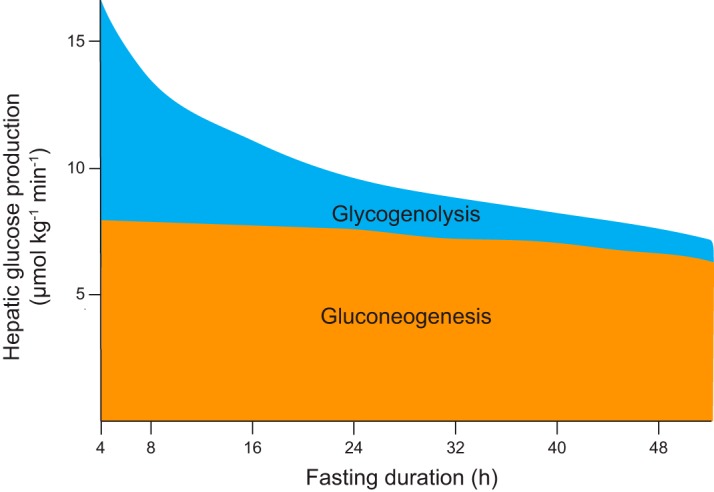FIGURE 3.

Sources of hepatic glucose production during fasting in humans. During the early postprandial period (not shown), the liver performs net glucose uptake as ingested glucose is stored as liver glycogen. Gluconeogenic flux continues but is diverted into glycogen storage. After this period, gluconeogenic flux contributes to hepatic glucose production and continues at a relatively constant rate for ~48 h, eventually decreasing due to declining substrate availability. Net hepatic glycogenolysis, in contrast, initially contributes about half of hepatic glucose production, but its rate decreases exponentially in concordance with hepatic glycogen content. Hepatic glycogenolysis still contributes appreciably to hepatic glucose production after 24 h of fasting, but is nearly depleted by 48 h. Because plasma glucose concentrations reflect rates of hepatic glucose production during a fast, the plasma glucose concentration is a systemic signal of hepatic glycogen content during fasting. [Data from Rothman et al. (704).]
